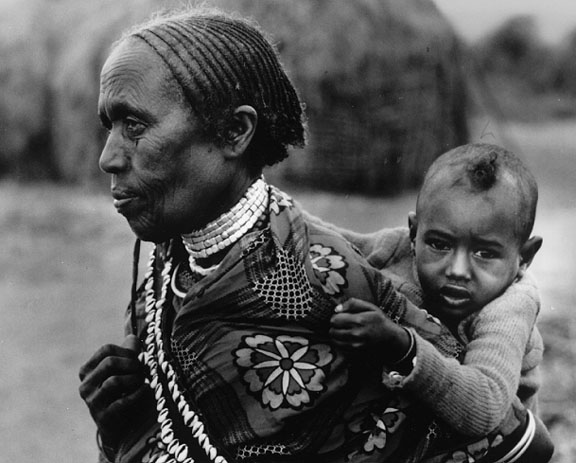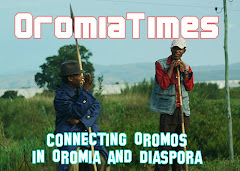 Coffee, Colonialism and Capitalism; Introduction to ‘Ethiopian’ Tyranny
Coffee, Colonialism and Capitalism; Introduction to ‘Ethiopian’ Tyranny
The Sidama Intellectual Side Goodo amalyzes the reasons of poverty in the occupied - by the alien Amhara invaders - Sidama Land and highlights the methods employed by the Amhara / Tigray rulers in Abyssinia's most appalling business: the illegitimate exploitation of the Sidama Coffee.In an earlier article under the title ‘Coffee, Colonialism and Capitalism; Introduction to African Crisis’, we published the first part of the Sidama Intellectual Side Goodo’s article on ‘Sidama Land – Coffee Economics, Politics and Poverty’.
It was an introduction to the economic crisis that has permanently characterized Africa since the beginning of the Colonial Times, and to the purely colonial structures of modern Abyssinia, fallaciously re-baptized ‘Ethiopia’, which is the result of the Amhara barbaric kingdom invasions and the totalitarian rule of the cruel and inhuman Amhara and Tigray dictators.
The article was mainly articulated around two parts, namely Part 1. Poverty, Hunger and Underdevelopment in Africa, and Part 2. Poverty and Underdevelopment in ‘Ethiopia’. In the present article, we will publish Mr. Side Goodo’s main parts of analysis.
Sidama Land – Coffee Economics, Politics and Poverty
By Side Goodo, Sidama Intellectual
Part 3. Poverty in Sidama Region
The Sidama region with estimated total population of 5 million which makes Sidama the 5th largest ethnic group in ‘Ethiopia’ after Oromo, Amhara, Ogaden and Tigray, is one of the least developed regions in the country already at the bottom of the fourth world.
Only about 8% of the inhabitants of Sidama have access to electricity. The average rural household has only 0.3 hectare of land (compared to the national average of 1.01 hectare of land) and the equivalent of 0.5 heads of livestock. Most cattle in Sidama particularly in the low lands died due to tsetse fly infestations in the early 1980s.
Only 15.4% of the population is in non-farm related jobs, compared to the national average of 25% and a southern average of 32%. Primary school enrollment has improved since recently to reach about 68% of all eligible children while enrollment in secondary school is one of the lowest (18%).
These figures are inflated because of highly deflated population figure for Sidama of 3 million. Continued changes in climatic conditions due to global warming increased land areas in Sidama exposed to malaria to about 72% (World Bank, Country Memorandum, 2004).
All indictors reflect the glaring poverty in Sidama region. Sidama is predominantly rural society. 91 % of the total pupation in Sidama lives in rural areas. Thus it is primarily the peasant farmers who languish in poverty in the Sidama region. Fragmented land holdings, less than 0.3 hectares per household, coupled with very high population density of over 430 persons per sq km, implies a huge reservoirs of redundant labour force that needs to be employed out side of the subsistence farming. And yet the proportion of the total population engaged in non-farm related jobs in the Sidama region is only about 15%.
Sidama is endowed with various natural resources. Rivers such as Ganale that form Wabeshebelle river in Somalia originates in Sidama high lands of Harbagona. Lakes Awassa in the northwest, and Abaya in the south west, offer great tourism potentials for the region.
On top of all these, Sidama is endowed with the resources that make the Sidama name a global household name- that is, its black gold- coffee. Sidama produces abundant high quality organic (speciality) Sidama (Sidamo is a bastardised name given by the Amhara rulers) coffee that fetches the highest international retail prices for food chain multinationals such as Starbucks.
Part 4. Sidama: Coffee and Poverty
Coffee, believed to have been discovered a 1000 years ago by a Kaffa goatherd, in the Kaffa region of the country, is one of the most important cash crops in the Sidama region. In the year 2005, Sidama and Gedeo alone produced over 63,562 tons of coffee (Central Statistical Agency, 2005). This is 1/3 of the total coffee output for the country during the year.
Sidama is very well known for its production of garden coffee. Speciality Coffee is grown in many villages. Sidama has ideal soil type and climatic conditions-including altitude, rainfall and temperature for the production of Arabica coffee. Coffee is predominantly produced in villages organized in 39 primary coffee cooperatives in Shabadino, Dalle, Aleta Wondo, Darra and Bansa districts.
However, almost every household in rural Sidama outside of extremely hot lowlands of Awassa, Shabadino and Dalle and very cold highlands of Hula and Harbagona produces coffee. Over half of the total population in Sidama directly or indirectly depend on coffee for livelihoods.
Over 60% coffee produced in Sidama region is washed coffee and ready for export while half of the country’s coffee output of about 200,000 tones is consumed domestically. There are over 89 coffee washing stations in Sidama alone. Thus, over 40% of washed coffee destined to the export market comes directly from the Sidama region.
Coffee is the single most important export commodity for ‘Ethiopia’ providing about 65% of the country’s foreign exchange earnings. ‘Ethiopian’ coffee exports currently account for about $400 million in export income. More than 20 million people in the country (about 25% of the population) derive their livelihoods from the coffee sector. Coffee contributes over 10% of the ‘Ethiopian’ GDP.
Coffee is the most important agricultural commodity in the world, and is worth up to $14 billion annually. In fact coffee is the second most widely traded commodity in the world next to petroleum. More than 80 countries, including ‘Ethiopia’, cultivate coffee, which is exported as the raw, roasted or soluble product to more than 165 countries worldwide. More than 121 countries export and /or re-export coffee. More than 50 developing countries, 25 of them in Africa, depend on coffee as an export, with 17 countries earning 25 per cent of their foreign exchange from coffee.
Coffee classification and grading systems in ‘Ethiopia’ were developed and licensed for the first time in 1952 and then modified in 1955. ‘Ethiopian’ coffee certification began after the establishment of the National Coffee Board of ‘Ethiopia’ in 1957. Licensed and graded coffee export from Ethiopia has the history of over half a century.
However, half a century of progressive coffee export did not at all translate to poverty reduction and increased access to livelihoods in Sidama. Instead, as specialty coffee production, processing and exports increased from Sidama, poverty, hunger and famine also increased. This is a symptom of fundamental economic and political problems in the country.
Why did massive high quality coffee production fail to reduce poverty in the Sidama region and in other coffee producing regions in ‘Ethiopia’? There are various factors that explain why coffee failed to contribute to poverty alleviation in these regions and in Sidama in particular.
Among others these include
a) inimical macroeconomic policies,
b) systematic exploitation of producers by parastatals,
c) unfair allocation of retail returns, and
d) international price volatility.
I will deal with each of these in the following sections.
a) Inimical macroeconomic policies
Successive dictatorial regimes in the country followed inimical macroeconomic policies. One of such policies is the exchange rate policy. ‘Ethiopia’ followed fixed exchange regime during both the feudal and socialist regimes. The national currency, birr, was exchanged for highly overvalued rate of about 2 birr for 1 US dollar for over two decades. Both economic theory and practice shows that currency overvaluation has serious negative effects on the export performance and export earnings.
Since coffee is the country’s major export, currency over valuation has the most undesired effects on the coffee export performance and earnings in the country.
Thus, prolonged currency overvaluation in the country during both the feudal and socialist regimes meant that coffee producers were denied of most of their coffee incomes.
Since the government was the primary exporter during these periods, it was able to artificially set the farm gate prices at a very low level so that it retains most of the returns generated from the coffee export.
Thus, the peasant farmers continued to earn negligent income from their coffee produces. This perpetuated rural poverty and under development in major coffee producing regions such as Sidama.
However, the macroeconomics alone does not explain why coffee failed to alleviate poverty in Sidama. Systematic exploitation of coffee farmers through parastatals was another reason why the benefit of coffee could not trickle down to the legitimate producers. I will review this in the next section.
Note
Pucture: Around the shores of Lake Awassa
 | By Prof. Dr. Muhammad Shamsaddin Megalommatis |

















No comments:
Post a Comment